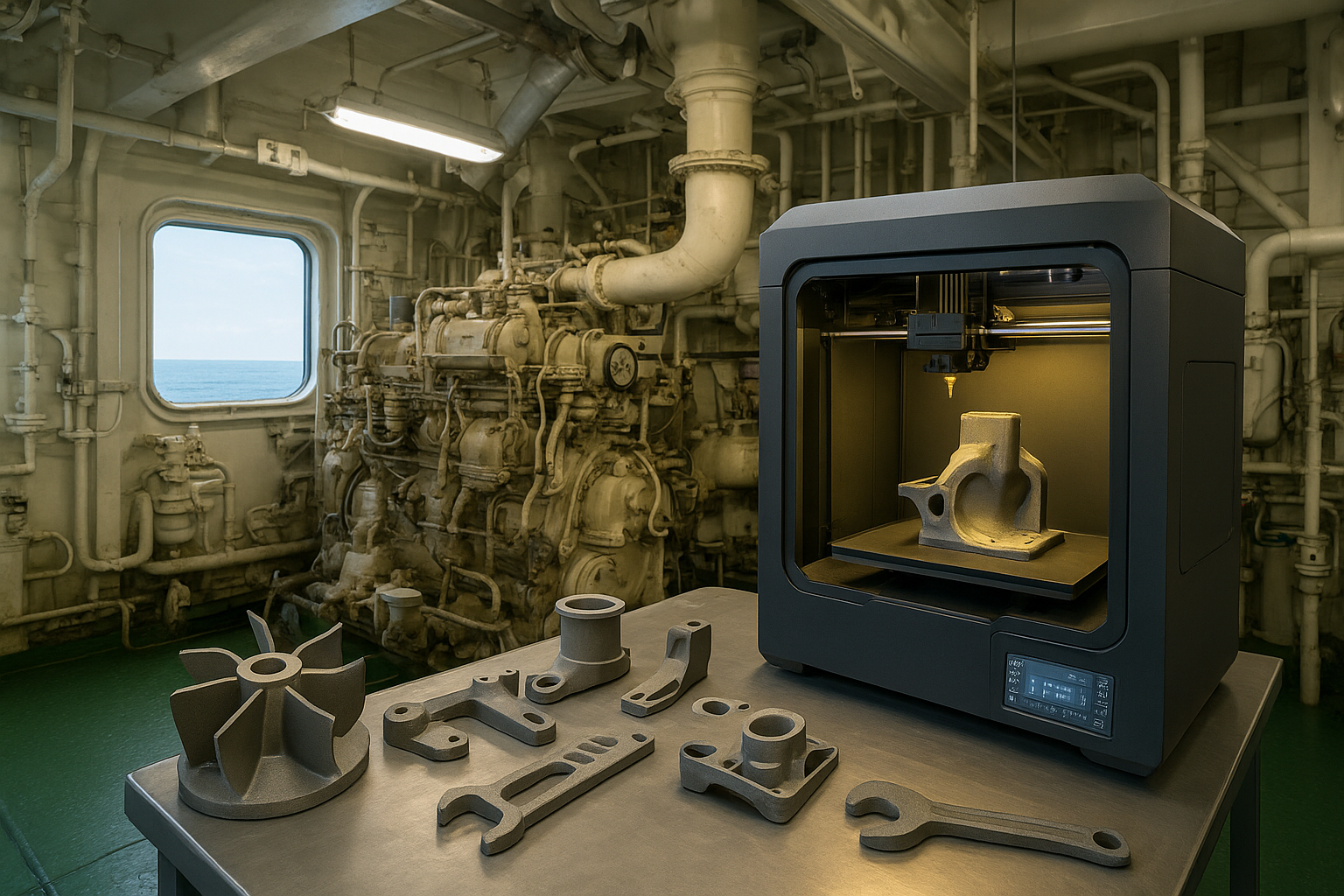
3D Printing in Maritime: Additive Manufacturing for Ship Parts and Repairs
Printing Your Way Out of Trouble at Sea
What is 3D Printing in Maritime?
- On-Demand Production: You can print parts exactly when you need them, eliminating the need to carry large inventories of spare parts.
- Customization: You can modify designs to fit specific needs or create parts that are no longer available from manufacturers.
- Speed: Many parts can be printed in hours rather than waiting weeks for delivery from suppliers.
- Cost Effectiveness: For small quantities or one-off parts, 3D printing can be much cheaper than traditional manufacturing methods.
Types of 3D Printing Technologies for Maritime
Maritime Applications of 3D Printing
On-Board 3D Printing
Materials for Maritime 3D Printing
Real-World Examples
Benefits for Maritime Operations
- Reduced Downtime: Ships can stay operational longer by printing replacement parts instead of waiting for delivery.
- Lower Costs: For small quantities or one-off parts, 3D printing can be much cheaper than traditional manufacturing.
- Inventory Reduction: Ships can carry fewer spare parts, reducing storage requirements and costs.
- Customization: Parts can be modified or customized for specific applications without the need for expensive tooling.
- Sustainability: 3D printing can reduce waste and energy consumption compared to traditional manufacturing methods.
Challenges and Limitations
The Future of Maritime 3D Printing
What This Means for Maritime Careers
Getting Started with Maritime 3D Printing
Frequently Asked Questions
The cost varies depending on the type and capabilities of the equipment. Basic desktop 3D printers can cost a few thousand dollars, while industrial-grade systems can cost hundreds of thousands of dollars. However, the cost is usually offset by savings from reduced inventory and faster repairs.
It depends on the material and printing process used. Some 3D printed parts can be as strong as traditionally manufactured parts, while others may have different properties. It's important to test and validate parts for their intended use.
Almost any type of part can be 3D printed, from simple brackets and fittings to complex engine components. The main limitations are size (limited by printer capacity) and material properties (some materials may not be suitable for certain applications).
Conclusion
Share This Article
Related Articles
Continue reading with these related articles

Maritime Drones and UAVs: How Unmanned Aircraft Are Changing Ship Operations
Discover how maritime drones and UAVs are revolutionizing ship operations. Learn about ship inspection drones, maritime surveillance, and unmanned aircraft in shipping.

Blockchain in Maritime: How Digital Technology is Transforming Shipping Logistics
Discover how blockchain technology is revolutionizing maritime logistics and shipping operations. Learn about digital shipping, smart contracts, and blockchain applications in maritime trade.

Autonomous Ships: The Future of Unmanned Maritime Transportation
Discover how autonomous ships are revolutionizing maritime transportation. Learn about unmanned vessels, AI navigation systems, and the future of crewless shipping operations.

Maritime IoT and Smart Ship Technology: Connected Vessels of the Future
Discover how Maritime IoT and smart ship technology are creating connected vessels. Learn about ship sensors, data analytics, and the Internet of Things in maritime operations.
© 2025 The Salty Mariner. All rights reserved.
